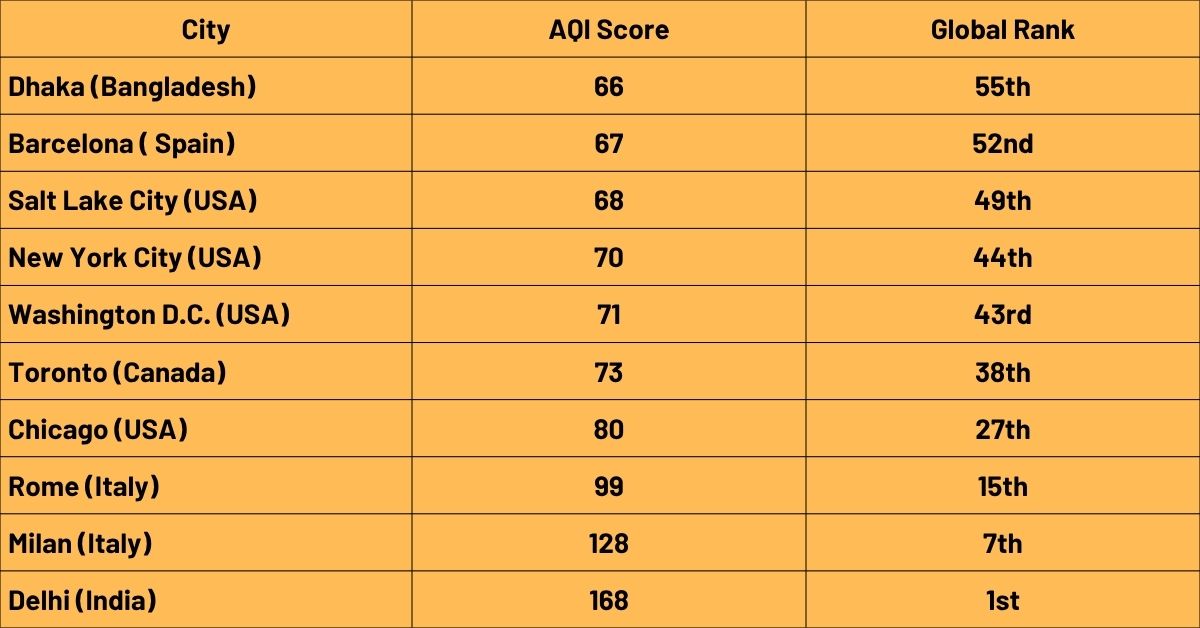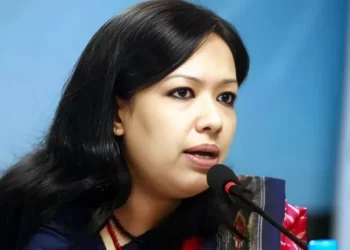Dhaka’s air quality index (AQI) has shown a surprising improvement during the Eid holidays, ranking cleaner than global cities like Chicago, Barcelona, and Rome.
As Eid holidays calm the bustling streets of Bangladesh’s capital, something equally surprising has emerged Dhaka’s air is cleaner than many major global cities. For a metropolis that frequently tops the list of the world’s most polluted cities, this is more than unusual it’s a breath of fresh air, literally.
A City on Pause: The Eid Effect
In Dhaka, Eid brings more than joy and festivities. It brings an exodus.
Over the past several days, the city has emptied as residents have traveled to their hometowns to celebrate Eid-ul-Adha with family. The streets are usually choked with cars, buses, and rickshaws are now open and quiet. Schools, offices, courts are all shut. The air feels lighter, and remarkably, so do the pollution levels.
Dhaka’s AQI Score Today
On Thursday morning, June 12, 2025, at around 10:00 a.m., Dhaka’s Air Quality Index (AQI) score was 66, putting it in the ‘moderate’ category.
That might not sound like a clean-air paradise, but for Dhaka, which frequently records AQI scores above 150 or even 200 during peak seasons, this number is significant. Even more astonishing, Dhaka ranked 55th on the list of most polluted cities worldwide a position far from its usual top 10 status.
How Does It Compare Globally?
Let’s take a quick look at how Dhaka’s AQI stacks up against other major global cities on the same day:

Dhaka, usually lumped with Delhi and Lahore in terms of hazardous air, is now outperforming many European and North American cities if only temporarily.
Read More: Strawberry Moon Rising Over Bangladesh: Don’t Miss This Rare Full Moon
What Does AQI Mean?
The Air Quality Index (AQI) is a standardized measure used to communicate how polluted the air currently is or how polluted it is forecast to become. Here’s how AQI scores are interpreted:
-
0–50: Good
-
51–100: Moderate
-
101–150: Unhealthy for sensitive groups
-
151–200: Unhealthy
-
201–300: Very Unhealthy
-
301+: Hazardous
Dhaka’s current AQI score of 66 places it in the “moderate” range not far from being classified as “good.”
What Pollutants Are Measured?
In Bangladesh, AQI is calculated using five key pollutants:
-
PM10 and PM2.5 (particulate matter)
-
Nitrogen dioxide (NO₂)
-
Carbon monoxide (CO)
-
Sulfur dioxide (SO₂)
-
Ozone (O₃)
Among these, PM2.5 (fine particulate matter) is often the most dangerous, as it can penetrate deep into the lungs and bloodstream.
Why the Air Is Cleaner Right Now
There are several reasons for this temporary improvement in Dhaka’s air:
-
Mass Holiday Travel – Millions have left Dhaka for Eid, significantly reducing traffic emissions.
-
Office and School Closures – Fewer operational buildings mean lower electricity use and industrial activity.
-
Reduced Construction Work – Many construction sites are closed during the holidays, minimizing dust and emissions.
-
Recent Rainfall – Although rain has lessened, prior showers may have helped settle airborne particles.
This unique combination has given Dhaka a break and its residents cleaner air to breathe.
The Usual Reality: A Pollution-Struck Dhaka
This improvement comes against a grim backdrop. Normally, Dhaka battles severe air pollution, especially in winter when smog, brick kilns, and traffic congestion combine to create hazardous conditions.
According to the World Health Organization (WHO), air pollution causes an estimated 7 million deaths annually worldwide. The main causes include:
-
Stroke
-
Heart Disease
-
Chronic Obstructive Pulmonary Disease (COPD)
-
Lung Cancer
-
Severe respiratory infections
Dhaka’s residents are frequently at risk, specially during dry, cool months when pollutants linger in the air.
Top Polluted Cities Today
Despite Dhaka’s temporary drop, air pollution remains a global issue. The most polluted cities on June 12, 2025, were:
-
Delhi, India – 168 AQI
-
Baghdad, Iraq – 162 AQI
-
Lahore, Pakistan – 156 AQI
-
Riyadh, Saudi Arabia – 137 AQI
These cities exceed the “unhealthy” threshold, posing severe health risks, especially for children, the elderly, and those with respiratory conditions.
Can Dhaka Maintain This?
This temporary reprieve in air pollution raises a crucial question:
Can we sustain cleaner air in Dhaka even after Eid?
To move toward long-term improvement, several strategies could be adopted:
-
Improved Public Transport – Reducing reliance on private vehicles.
-
Clean Energy Initiatives – Phasing out diesel generators and coal-based industries.
-
Construction Regulations – Enforcing dust control at sites.
-
Green Spaces – Planting more trees to act as natural air filters.
- Better Urban Planning – Decentralizing the population and reducing Dhaka’s over-concentration.
This Eid, Dhaka received an unexpected gift cleaner air. While it may only last for a few days, it serves as a clear reminder that change is possible, even in one of the world’s most polluted cities.
Cleaner air should not be a holiday miracle it should be a daily reality. With the right policies, public awareness, and sustained action, Dhaka can breathe easier not just during Eid, but year-round.
Source: TBS


















